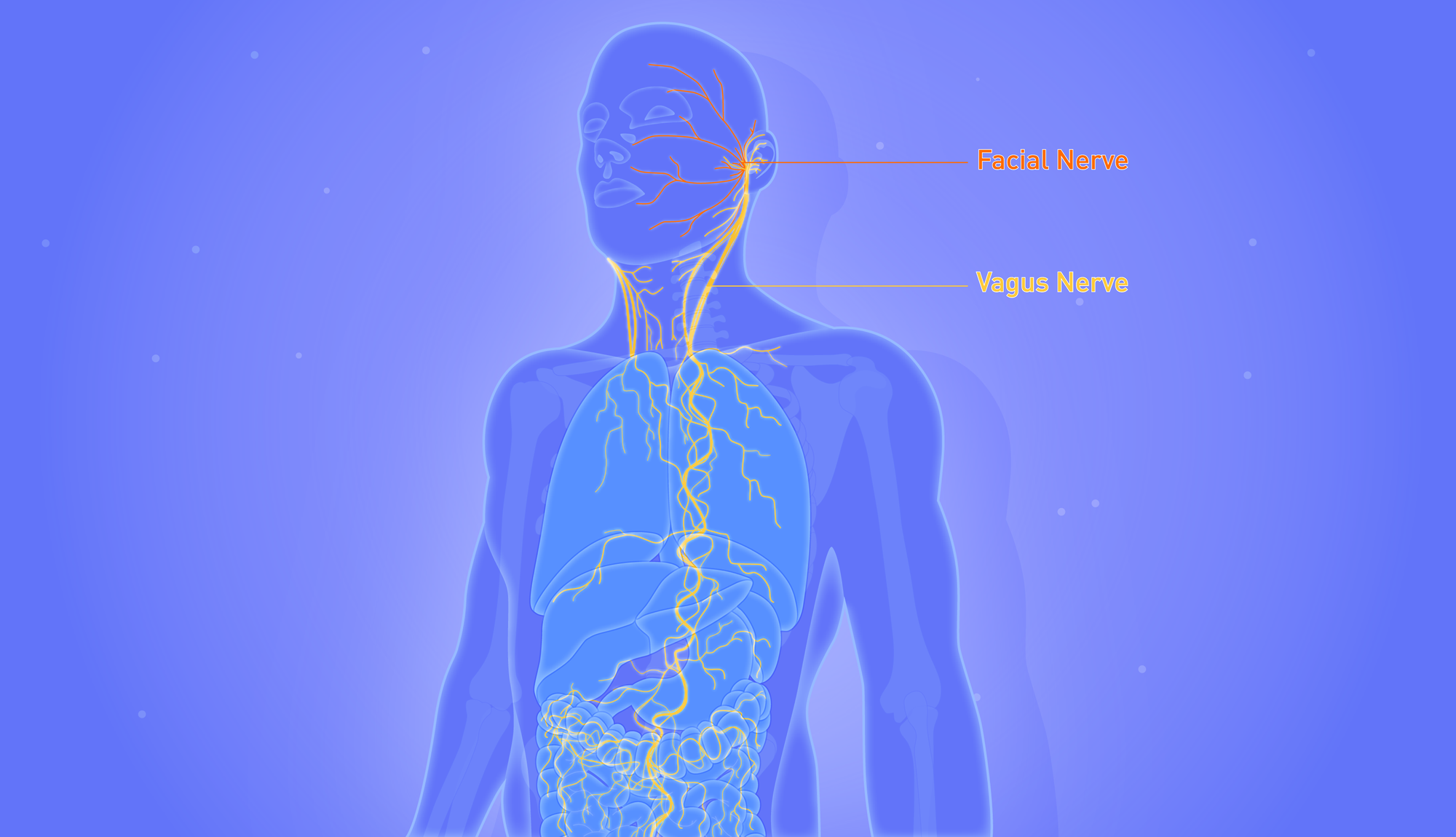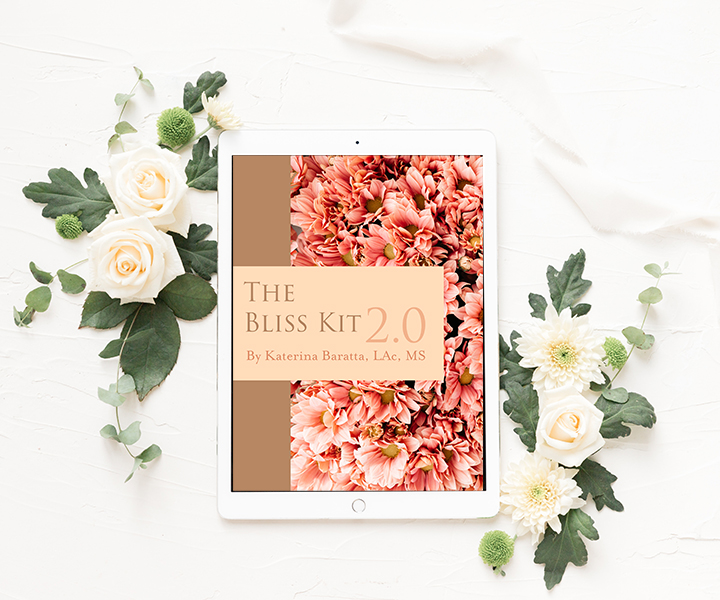5 Natural Ways to Calm Panic Attacks
Do you wish there were a magic button you could press to quickly calm panic attacks?
Well you might not have a magic button exactly.
But you do have the vagus nerve and the parasympathetic nervous system (PNS).
And when you learn how to stimulate the vagus nerve and turn on your PNS, you can switch from crazy-stressed-out-maniac-panic mode to relaxed-and-composed in just a matter of minutes.
Here’s what we’re going to cover in this article:
- How to know if you’re having a panic attack
- How nervous system disregulation leads to panic attacks
- 5 Natural ways to calm panic attacks (and prevent them from happening in the first place)
How to know if you’re having a panic attack
A panic attack is an episode of extreme anxiety, even though there is no immediate threat present.
Symptoms can vary a bit between panic attacks, but one thing is for sure.
A feeling of impending doom takes over your body and your mind starts racing to find a way out.
You might feel tightness in your chest, and have trouble taking a deep breath.
Your heart might start to race.
You might feel pain, tension, or tingling in your body, like you’re about to have a heart attack or something else has ruptured.
Your consciousness can shift so all of a sudden nothing feels real.
You may even have an out-of-body dissociative experience.
Your body might start to shake, you might feel dizzy, and you will almost definitely start to sweat.
When this happens, you might get so scared that you end up in the emergency room.
It can be so overwhelming that you feel like you’re going to die.
All of these are signs that your sympathetic nervous system (SNS) has taken over and is operating in overdrive.
Because your SNS is responsible for your body’s stress response, which focuses all of your body’s energy on survival.

And in order to calm down, you’re going to have to find a way back to turn down that stress response so your PNS’s default rest-and-digest mode can regain control.
This is where the vagus nerve comes in.
What is the vagus nerve, and how can it help in a panic attack?
The simplest way to describe the vagus nerve is that it’s the control center that turns on your body’s rest-and digest mode.
And it has widespread effects on your mind and body’s function.
Technically speaking, the vagus nerve isn’t just a single nerve fiber.
The vagus nerve refers to a collection of cranial nerves (a.k.a. vagal nerves) that make up the most important nerves in the PNS.
Vagal nerves run from your brain, through the sides of your neck, into your chest, lungs, and heart, and all the way down into your gut.
And they impact everything from your voice to your heart rate, hormone flow, digestion, and mood.
On the other end of the spectrum, when you get stressed your SNS takes over.
The SNS is responsible for the fight-fight-fawn-freeze-flood-fatigue responses that help you survive in threatening situations.
When your SNS gets turned on, your body prioritizes survival above all else.
So instead of doing its regular business of digesting, detoxing, enjoying and figuring out life and so on, your body shuts down all non-essential services to focus on the issue at hand.
And the issue at hand is how to survive whatever threatening situation you’re encountering at the moment.
But surviving is not the same as thriving.
And a huge problem that we humans have is that the vast majority of the time when we’re super stressed out or even panicking, there is no immediate threat present.
But the nervous system doesn’t know the difference between a stressful thing that you’re imagining vs. a stressful thing that’s actually happening.
So you end up activating your SNS unnecessarily every time you think a stressful thought.
And you end up feeling anxious because there is nothing immediate to fix.
Your mind is scrambling to try to find a solution to the stress you’re feeling, but since you’re not actually under threat there is nothing to really do to get you out of there.
This is where panic attacks come from.
Panic attacks happen when the stress that’s stored in your body overwhelms you, and your mind can’t figure its way out.
The problem is, the stress that you’re feeling usually isn’t from something that’s immediate.
It usually comes from stressful situations that you haven’t yet fully processed out of your system.
And when this stress adds up, you get tipped over your threshold and end up with a panic attack.
So to calm panic attacks, you really need to approach the issue from 2 sides.
Obviously, first thing’s first, you need to quickly calm your nervous system down when you feel a panic attack coming on.
But more importantly, you have to address the underlying stress that lead to you having a panic attack in the first place.
And we’re about to talk about both.
Here are 5 Ways to Calm Panic Attacks (and prevent them from happening in the first place):
1. Cold exposure on the sides of the neck to calm panic attacks
Popularized by Wim Hof, cold exposure is a safe way to shock your system into focusing on relaxing into the present moment.
And cold water or an ice-pack placed specifically on the sides of your neck, where the vagus nerve runs, has been shown to activate the PNS and reduce stress (1), and may therefore help in calming the symptoms of a panic attack.
This is strategy is definitely worth trying if you have panic attacks up to a few times a year.
But if panic attacks are a more chronic issue for you, be cautious in using this strategy on the regular unless you’ve consulted a holistically-trained practitioner.
For some people who tend toward cold imbalance and headaches, cold exposure on an isolated area of the body can make symptoms worse.
Interestingly, full-body cold immersion is often a better option for people with this type of pattern.
Because it drives the warmth to the interior where it can build strength and radiate back out to the rest of the body over time.
Full-body cold immersion is also a great long-term strategy to help you learn how to regulate your nervous system.
But most people don’t have an ice-bath available when they’re having a panic attack, so an ice-pack or cold water on the sides of the neck is a better option in most acute situations.
And if cold is not available to you at all, you can also try an sternocleidomastoid (SCM) massage.
Similar to cold exposure on the sides of the neck, massaging the SCM can activate the vagus nerve and help you calm a panic attack.
Click here to watch a video tutorial on how to do this.
2. Slow down, deepen breath, and extend the exhale to calm panic attacks
As you now know, when you’re having a panic attack, your SNS is in overdrive.
And this means that your breath becomes rapid and shallow in order to get more oxygen to your muscles.
One thing that’s really cool about the vagus nerve is that the nerve fibers are afferent and efferent, meaning they go in both directions.
So when you think a stressful thought, you activate the stress response in your body.
But when you relax your body or mimic the physiological effects of relaxation, guess what happens?
You turn off your stress response and activate your rest-and-digest mode!
This is why one of the best things you can do to calm a panic attack is to mimic relaxed breath patterns by deepening and slowing your breath down.
Here are some suggestions to make that happen:
Count as you breathe and extend the exhale.
Inhale for a count of 3 or 4, holding for a count of 3 or 4 (or until you get the urge to exhale), exhaling for a count of 4, 5, or 6, and holding the exhale for a count of 3 or 4 (or until you get the urge to inhale).
Why make the exhale longer?
As demonstrated by a 2018 study published in the Mental Illness Journal, prolonging the exhale activates the PNS to rapidly reduce stress (2).
But you don’t just want to lengthen your breath, you also want to deepen it.
And if you don’t have a lot of practice with breath work it can be hard to know the difference between a deep and a shallow breath.
To make sure you’re really breathing as deeply as you think you are, put your palm over your belly button as you breathe.
Use your breath to push your belly out against your palm, like you’re blowing up a balloon inside your belly.
Imagine the breath filling you up like a glass of water, starting at your lower belly, moving up into your diaphragm, lower ribs, and all the way up to your heart.
Feel the breath expanding your body in all directions, front, back, and sides.
Hold at the top, and let everything relax down in reverse as you exhale.
Deep slow breathing works for the majority of people, but for some people deep breathing can actually make a panic attack worse (yikes!).
This happens because stressful memories (sometimes called trauma) are stored in your body, and your body constricts in an attempt to control them.
This means that when you try to open up those constricted areas through deep breathing, you open up more space in your body for emotions to flow.
This is important work to do in healing the roots of anxiety, especially when working with an experienced guide.
But it’s not the most helpful strategy to use when you’re alone in the middle of a panic attack where you’re already struggling with emotional overwhelm.
If this is you, if you feel more anxious when you try to deepen and slow your breath, click here to read about specific strategies that can help you.
3. Shaking to calm panic attacks
From an energetic standpoint, panic attacks happen when emotional energy is unable to move out of the mind-body system.
This leads the body to constrict and tense up in an attempt to control unwanted emotions.
But emotions are energy in motion, they want to move through the body and out.
So when emotions are constricted for long enough, the pressure can become overwhelming and you may eventually end up with panic attacks as that energy tries to force its way out.
Something that you may notice when you’re experiencing a stressful situation is that your body naturally starts to shake.
(If you’ve ever given birth you probably know what I’m talking about.)
Shaking is an innate stress-relief mechanism we have built into our bodies.
In his book, In an Unspoken Voice, Dr. Peter Levine describes how “gyrations and undulations are a way that our nervous system ‘shakes off’ the last rousing experience and ‘grounds’ us in readiness for the next encounter with danger, lust and life,” (p. 16).
Shaking is also used in the JinJing Gong lineage of Qigong that I learned in graduate school, as a way to shake off stress and energetic blockages to allow life force to flow and establish equilibrium in the system.
Unfortunately, most of us suppress this shaking, and as a result, the stress gets stuck in our nervous system without a healthy way to move out.
But you can start moving it intentionally if you want to by shaking.
The next time you’re having a panic attack, try jumping up and down, with your eyes closed if it feels comfortable, and shake into your whole body.
You can make shaking even more effective if you allow yourself to moan, groan, hum, and make other vocalizations as you shake off the stress.
And if you feel like crying, gagging, coughing, laughing, or anything else, let it flow!
Emotional expression is literally the process of pressing those emotions out so they can be released.
It may not feel convenient to shake and express your emotions when you’re in the middle of a panic attack, you may be embarrassed, but it sure is better than feeling like you’re about to die!
And when you realize how good you feel afterwards, you’ll know that it was worth it.
You may also want to try something called Trauma Release Exercises, which activate your body’s natural shaking response to release stress.
Whatever method of shaking you choose, the more regularly you do it, the greater the effects will be.
4. Meditation to calm panic attacks
Meditation is another helpful practice to regulate your nervous system and prepare you for dealing with panic attacks.
On one level, meditation simply allows you to settle into quiet moments instead of distracting yourself with stimulation.
This, in and of itself, is helpful for nervous system regulation.
On a deeper level, meditation helps you recognize the distance between yourself, your thoughts, and your emotions.
This realization may seem trite, but it couldn’t be more important, especially when it comes to anxiety and panic attacks.
Because when you’re in the middle of a panic attack, you’re fully identified with your thoughts and emotions.
You’re completely consumed by them.
You think they are who you are, and that they determine what’s going to happen to you in the future.
This is super stressful, especially when your thoughts and emotions are uncomfortable!
But when you practice meditation, you naturally start to realize that you are not your thoughts or emotions.
You are the observer of thoughts, you are the feeler of emotions.
Meanwhile, thoughts and emotions flow through you, but they are not who you are.
They are just energetic patterns that you experience in life.
When you think they are who you are, you cling to them for dear life.
Because when you think that you are your thoughts and emotions, letting them go is a form of death.
You imagine that letting them go means letting go of who you are.
In Truth, you only have to let go of who you think you are (this imagined image you carry of yourself sometimes called the Ego).
This is what Jesus meant when he said that you have to die in order to be reborn.
You have to let go of what you are not, of what is keeping you stuck in destructive patterns, in order to find peace within yourself, in order to come home to yourself, in order to emerge as you really are.
And meditation, the practice of observing, focusing your attention, and letting go, is a great foundation for this transformation.
Because when you’re no longer fully identified with your thoughts and emotions you have a much easier time letting them go.
And when you allow your thoughts and emotions to flow through you, you release the pressure that builds up inside of you when you try to control them.
When you fight against what is, you always lose and you’re never actually in control.
Ironically, it’s only when you surrender to the experience that life is offering you in the present moment that you are able to control anything at all.
5. Change your diet to calm panic attacks
Panic attacks are a form of anxiety, and anxiety is always a response to stress.
What many people don’t realize is that this stress isn’t a mental issue. Instead it’s rooted in the body.
Remember how we talked about vagal nerve fibers being afferent and efferent, meaning they flow in 2 directions, from the brain to the body and from the body to the brain?
This fact is relevant here too.
Because when your body is stressed, your mind’s job is to try to find a solution for that stress.
And the food you eat has a major impact on your body’s stress levels.
When you eat overly processed, refined, packaged, preservative-laden, deep-fried, high-sugar content foods and alcohol, you add inflammation to your system which increases your body’s workload.
Eating foods that you personally are sensitive to can also cause issues.
Over time, you can mess up your blood-sugar balance, gut-health, and hormone flow, all of which have a direct impact on mood, stress levels, and anxiety.
So if you are prone to anxiety and panic attacks, it’s a really good idea to take a look at your diet.
Most people don’t have to cut junk food out entirely, but start to notice how different types of food make you feel after a meal and after a couple of days.
Figuring this out can be overwhelming, because everyone has different needs.
So it can be beneficial to work with a trained specialist to help you identify which foods might be most activating for you at this point in your life.
But one thing that helps everyone is to incorporate as many whole, local, and organic ingredients into meals as possible.
It’s also important to support your gut health by eating pre and probiotic foods (or taking a supplement if you are sensitive to these types of foods at first).
These 5 strategies are a great starting point for calming panic attacks, but they are far from the whole story.
And as you’ve probably noticed, there’s no such thing as a one-size-fits all approach when it comes to health and happiness.
If you’d like personalized support to heal the root causes of your stress and anxiety, click here now to set up a free consultation and find out if a Personalized Wellness & Healing Journey is right for you.
I can’t wait to hear from you!





